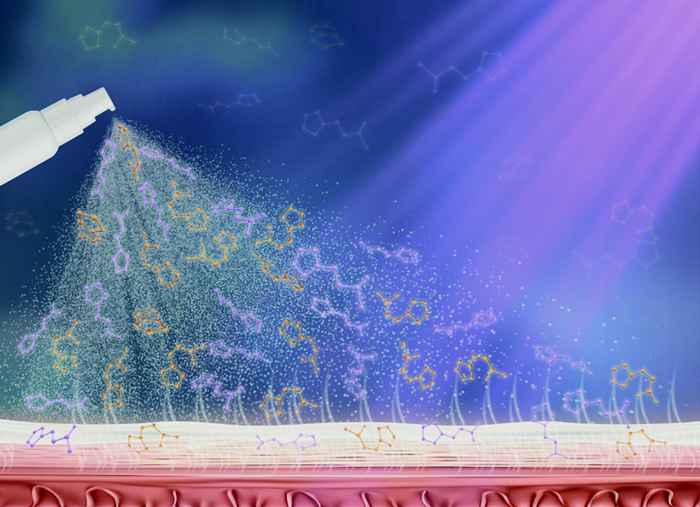A novel molecular scaffold for next-generation, nature-inspired sunscreens
First thorough understanding of the photochemistry and photophysics of urocanic acid
21 November 2024

According to Wybren Jan Buma, professor of Molecular Photonics at the UvA’s Van ’t Hoff Institute for Molecular Sciences, the two papers provide detailed insight into the light-conversion mechanism of urocanic acid. “This is an excellent starting point for further optimization of its photoactive properties”, he says. “We envision many specific applications of urocanic acid and its derivatives, notably in safe UV filters”. He expects that urocanic acid can meet the need for better, safer and more efficient sunscreen agents, replacing synthetic filters that are under discussion because of potential adverse effects on health and environment.
Natural sunscreen
Urocanic acid is in fact a natural sunscreen. It is present in the upper layers of the skin and absorbs both UV-A and UV-B radiation, although with a Sun Protection Factor (SPF) of a mere 1.58 it is much less effective than synthetic sunscreens. A more important drawback is that upon UV irradiation, urocanic acid can transform into an immunosuppressive molecular variant. “You might think that all this makes urocanic acid not fit for use in a sunscreen”, Buma says, “but it is definitely worth investigating. We think it is possible to design effective urocanic acid based biomimetic sunscreens with a more favourable toxicological profile and optimize their photochemical and photophysical characteristics.”
First fundamental understanding
Buma and co-workers embarked on an extensive research program starting with high-resolution laser spectroscopy of isolated molecules and complemented by quantum chemical calculations. This led to a thorough understanding of how urocanic acid interacts with UV-light, and how this can be optimized by modifying the molecule. The team is the first to describe the photochemical and photophysical properties on such a fundamental level, Buma says. “Urocanic acid has for a long time remained an enigma for experimental spectroscopists and theoretical chemists alike. Our studies have in this respect revolutionized the field.” His team also established that previously reported studies suffered from unnoticed experimental side effects, leading to data that should be assigned to decomposition products rather than actual urocanic acid molecules.
Behaviour in solution
To confirm the behaviour of urocanic acid and its derivatives under conditions of practical application, the research team also performed studies in organic solvents and aqueous solutions. In cooperation with Prof. Vasilios Stavros and co-workers at the Warwick Centre for Ultrafast spectroscopy (UK), they applied time-resolved spectroscopy on timescales spanning eighteen orders of magnitude; from femtoseconds to hours. These studies provided vital insight in how the photochemical and photophysical properties can be tuned not only by molecular modification but also by the solvents used. This paves the way for optimizing potential sunscreen formulations based on urocanic acid derivatives. Furthermore, the team identified stable derivatives that could also reduce the immunosuppressive effects of ‘plain’ urocanic acid. These are currently being investigated, says Buma. “We expect that the present studies will incite a renewed interest in the photoactive properties of this class of molecules. That will ultimately lead to novel sunscreen filters, but also to novel applications in areas where photothermal materials are employed.”
Details of the papers
Jiayun Fan, Alexander K. Lemmens, Hans Sanders, Michiel Hilbers, Wim Roeterdink and Wybren Jan Buma: Urocanic acid as a novel scaffold for next-gen nature-inspired sunscreens: I. electronic laser spectroscopy under isolated conditions. Phys. Chem. Chem. Phys., 2024, 26, 27270-27280.
DOI: 10.1039/D4CP02087A
Jiayun Fan, Jack M. Woolley, Hans Sanders, Vasilios G. Stavros and Wybren Jan Buma: Urocanic acid as a novel scaffold for next-gen nature-inspired sunscreens: II. Time-resolved spectroscopy under solution conditions. Phys. Chem. Chem. Phys., 2024, 26, 27281-27291.
DOI: 10.1039/D4CP02088J